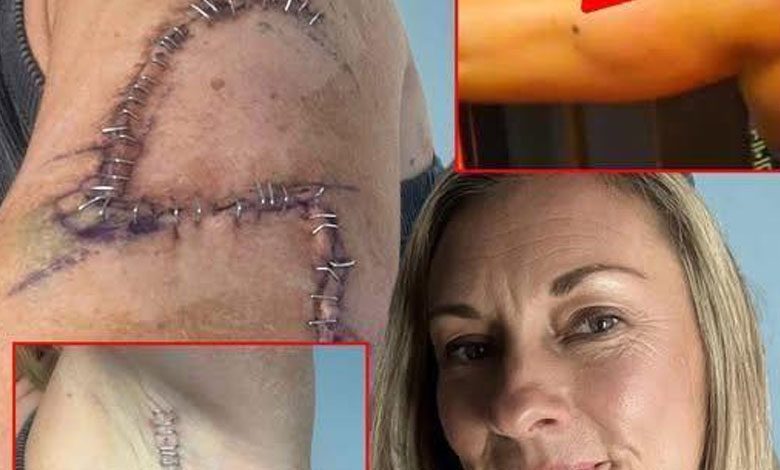When 34-year-old Sarah Mitchell from Oregon noticed a tiny mole on her shoulder, she didn’t think much of it. It looked just like all the other moles she’d had since her teenage years—flat, round, and light brown. There was no itching, no pain, no unusual color. It blended in with the rest, and she had no reason to be concerned.

Life was busy, and with no history of skin issues, Sarah brushed it off as just another mark on her skin. But over time, that tiny mole began to change—subtly at first, barely enough to raise suspicion. It darkened slightly, then became a bit raised, and the edges started to lose their clean, round shape. Still, Sarah hesitated to act. She didn’t feel sick, and she had always assumed skin cancer was something that only happened to people with obvious warning signs. It wasn’t until a close friend noticed it and urged her to get it checked that she finally booked a dermatologist appointment. That appointment changed everything. The dermatologist took one look and immediately recommended a biopsy.
Within days, Sarah received the results—melanoma, the most aggressive and dangerous form of skin cancer. The news hit like a punch to the stomach. That small, seemingly harmless mole was actually a serious threat, one that could have cost her life if left untreated. Sarah’s doctors quickly put together a treatment plan that involved surgery to remove the cancerous tissue. The extent of the removal was far greater than she anticipated. In order to ensure the melanoma hadn’t spread, surgeons had to cut deep and wide, removing a significant portion of skin and tissue around the mole. In total, Sarah ended up with 77 stitches across her shoulder and upper back. The physical pain was intense, but it was the emotional toll that truly shook her.
Looking in the mirror and seeing the long scar was a constant reminder of how close she came to letting something deadly slip by unnoticed. Recovery wasn’t easy, but the surgery was successful, and the cancer hadn’t spread beyond the original site. Sarah’s experience sparked a complete shift in how she approached her health. She began sharing her story with others—not to scare them, but to raise awareness. She encouraged regular skin checks and urged people to pay attention to any changes in their moles or skin.
